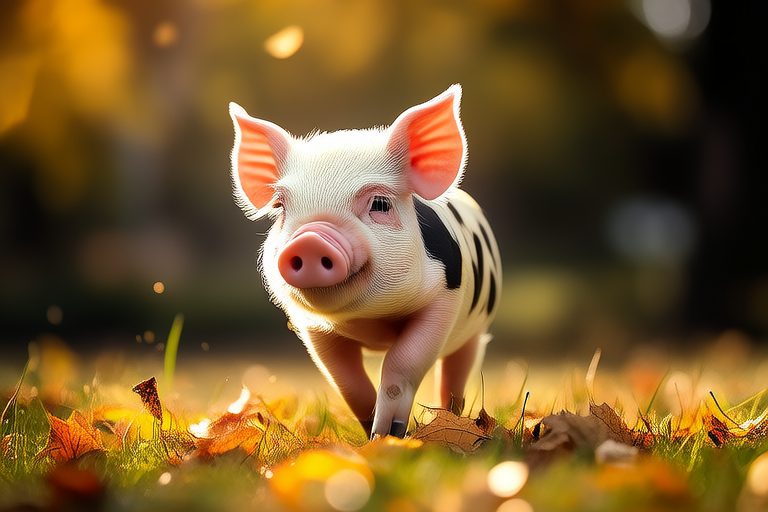Mini Pigs Unleashed: My Journey into Domestic Porcine Parenthood
When I first considered adopting a pet, the idea of a mini pig never crossed my mind. After all, who thinks about bringing home a piglet as a pet? But life has a way of surprising us, and so began my unexpected journey into domestic porcine parenthood. This article details my adventure from the initial attraction to mini pigs, through the adoption process, and into the realities of caring for these intelligent, social creatures.
The Initial Attraction
It all started when I stumbled upon an adorable photo of a mini pig online. Unlike their larger counterparts, mini pigs are compact, usually weighing between 50 to 75 pounds, making them ideal for apartment living. Their endearing faces, curly tails, and playful demeanor caught my attention immediately. What intrigued me further was the intelligence of mini pigs; they are known to be highly trainable and can learn tricks similar to dogs. These attributes made mini pigs seem like the perfect companion.
The Adoption Process
Adopting a mini pig involves more than just visiting a breeder or shelter. It’s essential to research thoroughly and choose a reputable source. I spent months reading up on mini pigs, visiting local shelters, and networking with other mini pig owners. Once I found a reputable breeder, the next step was to fill out an application. This process was rigorous, involving questions about my living situation, experience with animals, and commitment level. The breeder also provided extensive information about the specific piglet I was interested in, including its health history and temperament.
After a few weeks, I finally met my new family member, a sweet little piglet named Piglet. The moment I held her, I knew we were meant to be. She was curious and affectionate, qualities that would soon become the hallmark of our bond.
Challenges Faced
Raising a mini pig comes with its fair share of challenges. One of the most significant hurdles is understanding their dietary needs. Mini pigs are prone to obesity, which can lead to health issues such as joint problems and heart disease. Therefore, it’s crucial to provide a balanced diet rich in fiber and low in carbohydrates. Piglet initially struggled with overeating, but with consistent training and a structured feeding schedule, she learned to control her portions.
Another challenge is ensuring they have adequate space. While mini pigs are smaller than standard pigs, they still require ample room to roam and play. A spacious backyard or a large indoor area is ideal. Piglet quickly outgrew her initial living quarters, necessitating a move to a larger home. This transition was both exciting and daunting, requiring careful planning to ensure her comfort and safety.
Care Requirements and Dietary Needs
Mini pigs, despite their small size, have unique care requirements. Regular grooming is necessary to keep their coat healthy and free from parasites. They also need routine veterinary check-ups, vaccinations, and deworming. Piglet loves baths, and I’ve found that incorporating her favorite treats during grooming sessions makes the process smoother.
Dietary management is critical for mini pigs. A balanced diet includes a mix of commercial mini pig pellets, fresh vegetables, and limited fruits. Avoid high-sugar foods and grains, as these can lead to weight gain and health issues. Piglet enjoys leafy greens, carrots, and apples, but I always monitor her intake to prevent overfeeding.
